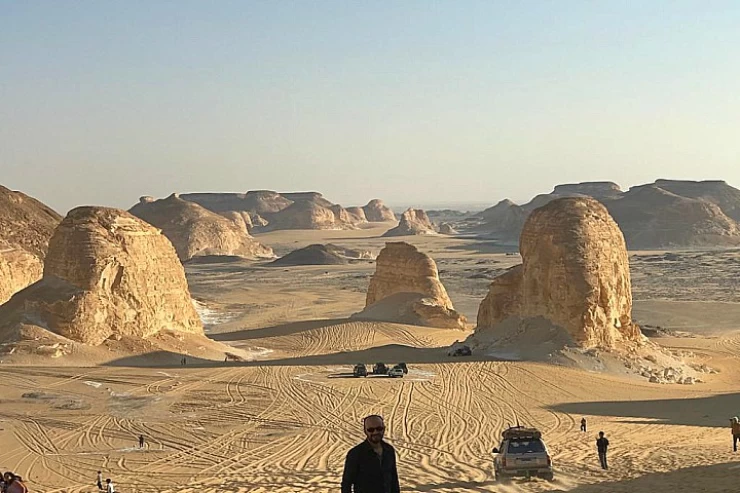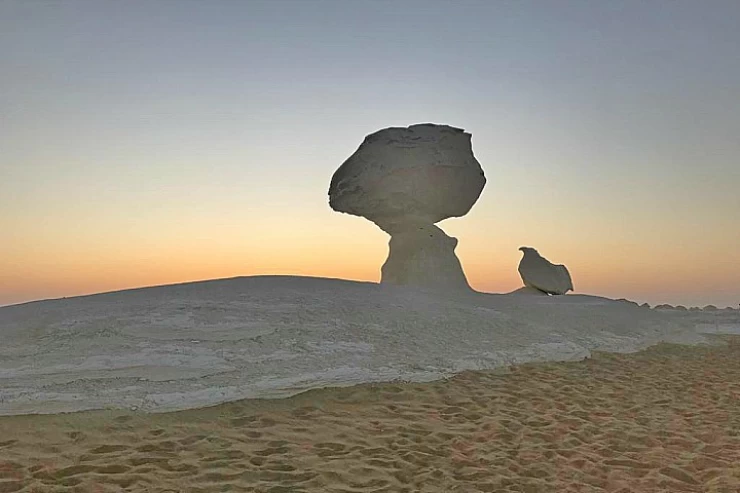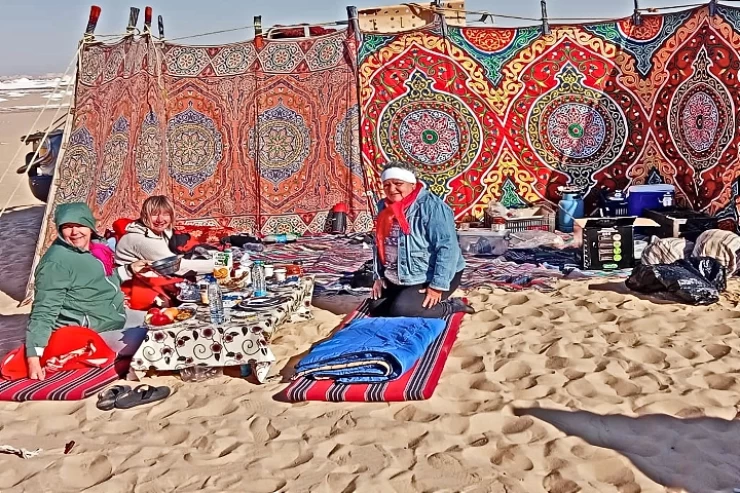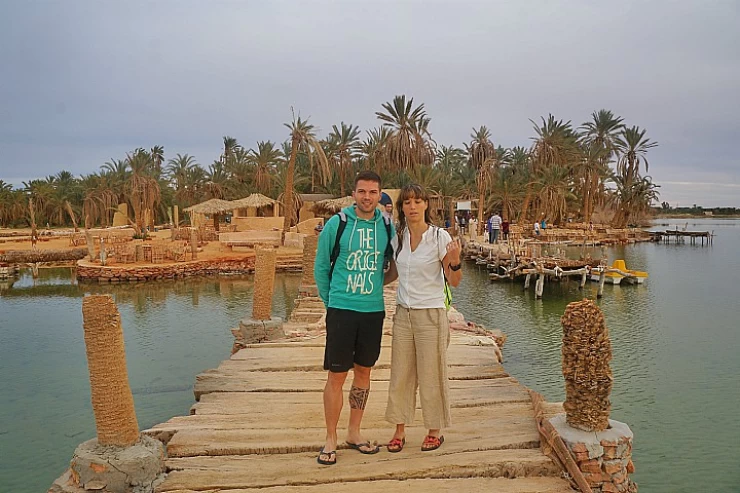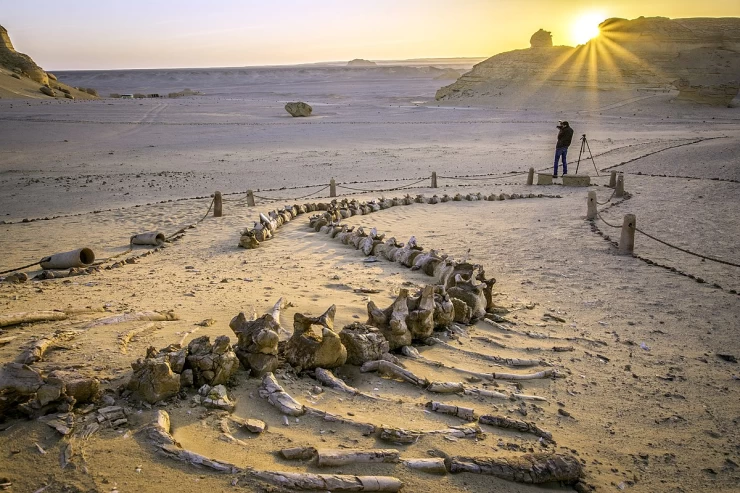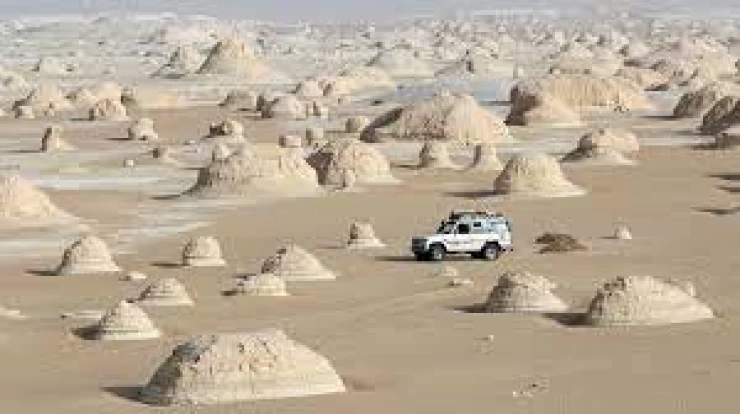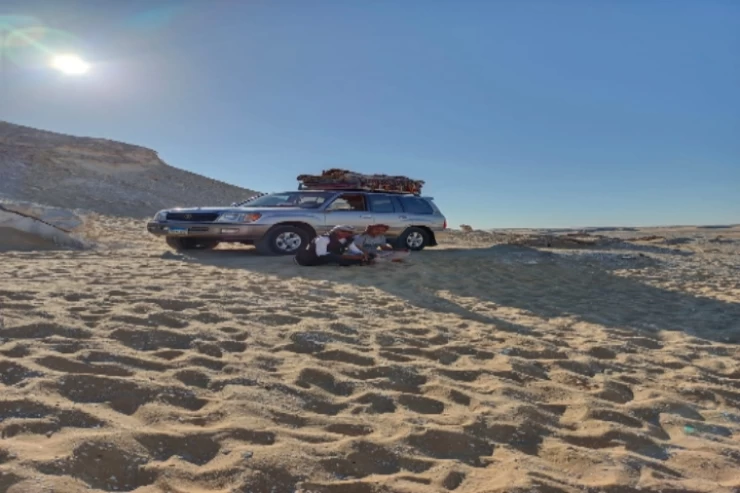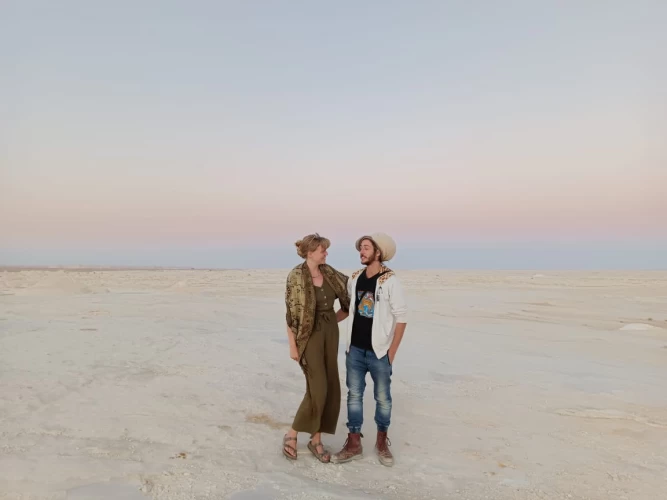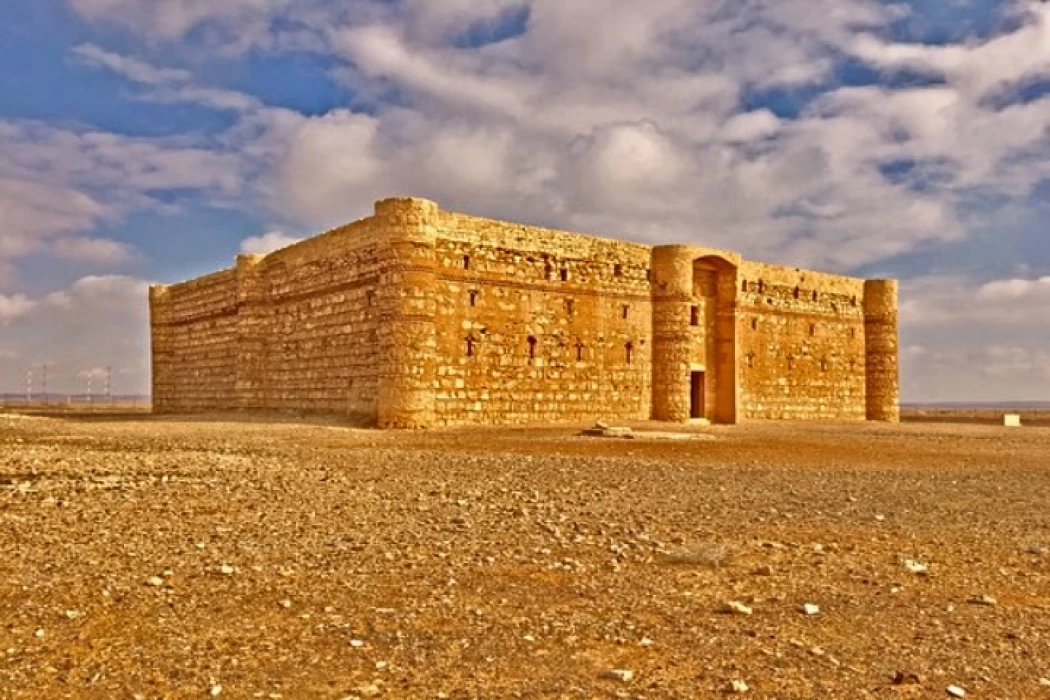
Desert Castles
Desert Castles of Jordon is located east of Amman, between Iraq and Saudi Arabia. It is built by the Umayyads (661-750 AD) and is considered the beginning of Arab architectural civilization.
Various assumptions have been made about the main function of these original monuments of early Islamic art. Residences, weekend huts, caravanserais, or hunting lodges of the Umayyad rulers, and were also used as the domain of the Umayyad princes in the 8th century. Another possibility of their use is that they used it to control the route from Damascus to Mecca.
Al-Mashta Palace
Al-Mashta Palace is located near Queen Alia International Airport, twenty miles south of Amman. One of the most beautiful things about Al-Mashta Palace from a technical point of view is the decorations carved in limestone in the southern facade in which the entrance is located. The height of this facade was six meters. Sultan Abdul Hamid gave this facade in 1903 to Caesar Guillaume, so it was preserved in the Kaiser Frederick Museum in Berlin and became The nucleus of the eastern section of the said museum.
Omayra palace
It is a small Qusair located fifty miles east of Amman in Jordan. It was built by Al-Walid bin Abd Al-Malik. This Qusair was not known until the year 1898 AD, a history of the features of the life of the Umayyad Caliphate.
Al-Qusayr is characterized by its wonderful wall paintings and beautiful carvings of birds, animals, and plant motifs.
Al Hallabat Palace
Al Hallabat Palace is located 25 km northeast of Zarqa and to the north of the paved road that connects the city of Zarqa with the Azraq Oasis. It was a commercial station and in the Roman era 63 BC-AD 331 AD, it was used as a defensive fortress to protect the commercial road that connects between Bosra al-Sham in the north and Aqaba in the south.
Alazrq Palace
It is one of the historical castles in Jordan. The Azraq Palace was built of black basalt stone, which characterized the palace and gave it a beautiful and picturesque shape. The castle was established to monitor and protect trade routes and remained in use for this purpose from that time.
Burqa Palace
It is located approximately 25 km northwest of Al-Ruwaished area, Bani Al-Qasr, made of black basalt stones.
Despite the destruction that afflicted this palace, parts of it still stand witness to the history and civilization of this prosperous region in those days, in addition to the concentration of this palace on the outskirts of the Burqa Dam, which increased his knowledge of everyone who drank from the water of this dam.
Toba Palace
The palace is located on one of the trade routes that used to connect Balqa with the north of the Arabian Peninsula. The remoteness of this palace and its remote location “about 140 km southeast of Amman” led to the fact that visiting it is not an easy matter for the local or foreign visitor, although the researcher looking for the splendor of the building Umayyad palaces defies These difficulties are to reach him.
Al Muwaqqar Palace
There are remains of another Umayyad palace, Qasr al-Muwaqqar, 35 km west of Harrana. Evidence suggests that the palace was decorated with splendid decorations, and there are beautiful Kufic inscriptions from the era of Caliph Abdullah bin Yazid, who ruled (720-724 AD). Only a crown was left bearing an inscription in Kufic letters.
Al Kharrana Palace
This palace is located on the road leading from Jordan Tours to Azraq, about 55 km from Amman to the east. This palace was built in the vicinity of Wadi Al-Harrana. It is square in shape, its length is 35 m. It consists of two floors. It was built in the style of Levantine houses.
Ain El Sil Palace
The Ain al-Sil Palace is one of the Umayyad palaces with a small area, with a side length of 17 meters, in the form of a square built of black basalt stones. This palace, which is in the middle of a farm belonging to it on its western side, contains a bathroom consisting of three or four rooms. Hence the importance of this palace because it contains a bathroom, which indicates the widespread construction of bathrooms in the Umayyad period.
Al-Esekhem Palace
This palace is located to the northeast, 15 km from Azraq Castle. This palace was built of black basalt stones as a defensive protectorate to protect Wadi Sarhan.
Latest Articles
Admin
Seabourn Sojourn Cruise Stops in Safaga Port
The Seabourn Sojourn, the flagship vessel of Seabourn Cruise Line's ultra-luxury fleet, was built in 2008 at the T. Mariotti shipyard in Genoa, Italy. Measuring 198 metres, it can accommodate up to 450 guests in its 225 spacious all-suite staterooms.
Admin
Norwegian Sky Cruise Stops in Safaga Port
Norwegian Cruise Line operates a cruise ship called the Norwegian Sky. It was constructed in 1999 and can accommodate 2,004 passengers in addition to 878 crew members. The ship has several dining establishments, lounges and bars, a spa and fitness center, swimming pools, and a number of entertainment areas.
Admin
Explora II Cruise Stops in Safaga Port
Explora II, the second vessel in the Explora Journeys fleet, sets sail in 2024 to redefine luxury cruising. With 461 ocean-front suites, 9 culinary experiences, and 4 pools, this haven of sophistication and sustainability promises an unforgettable "Ocean State of Mind" journey to inspiring destinations.
Admin
Mein Schiff 6 Cruise Stops in Safaga Port
The Mein Schiff 6 is the latest cruise ship in the renowned TUI Cruises fleet, offering passengers a luxurious and sophisticated cruise experience. At 315 metres long, this floating resort features a range of dining options, entertainment, and recreational facilities, including a spa, fitness centre, and sports amenities.
Admin
Mein Schiff 4 Cruise Stops in Safaga Port
When the Mein Schiff 4 cruise ship docks in Safaga, Egypt, passengers are granted access to a realm of ancient wonders. Aboard this state-of-the-art vessel, guests can embark on meticulously curated shore excursions that showcase the region's most iconic landmarks, including the Giza Pyramids, the enigmatic Sphinx, and the remarkable tombs and temples of the Valley of the Kings in Luxor.
Admin
MS Europa Cruise Stops in Safaga Port
The Silver Moon, Silversea's latest flagship, is a luxury cruise ship that offers an exceptional travel experience for Venezuelans exploring Egypt. With a capacity of 596 guests and an impressive 40,700 gross tonnes, the Silver Moon maintains the small-ship intimacy and spacious all-suite accommodations that are the hallmarks of the Silversea brand.






